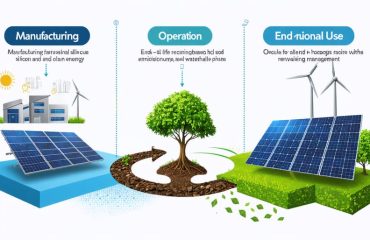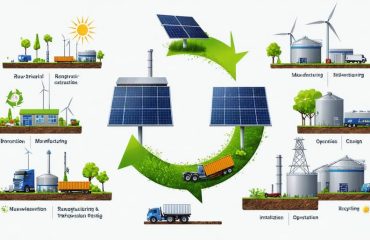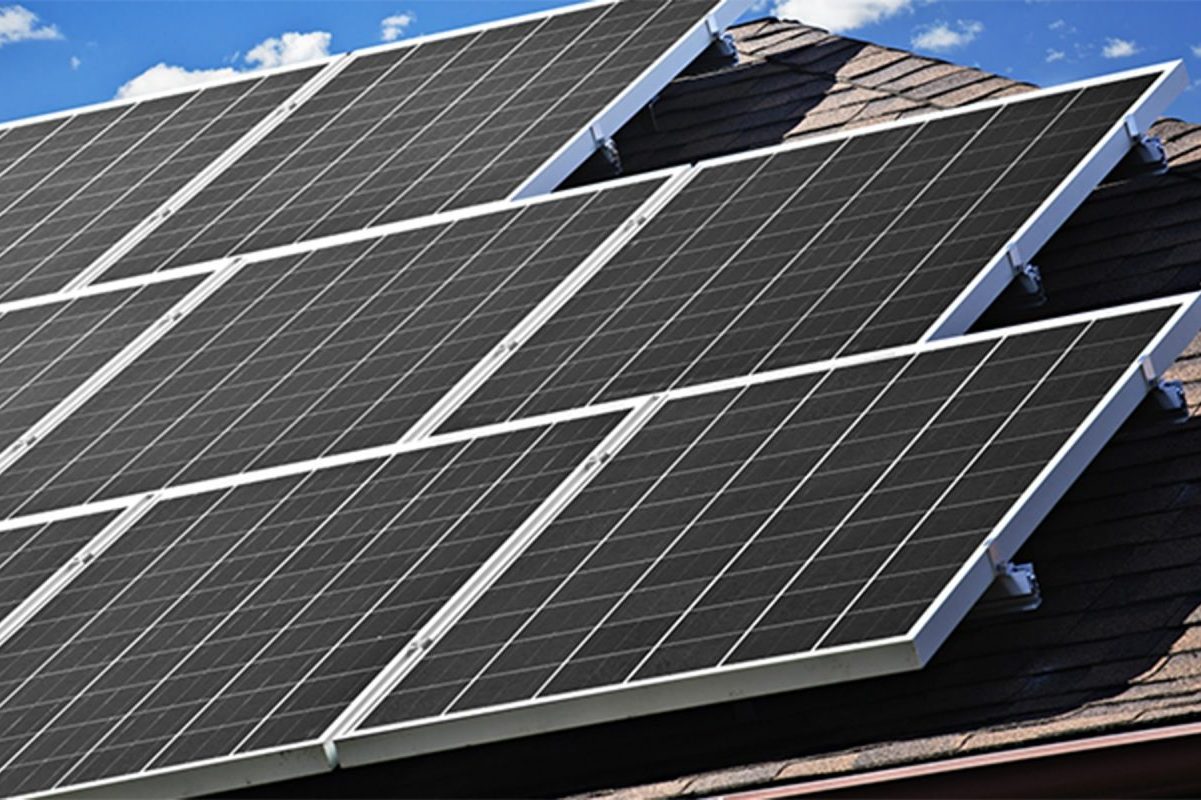Solar energy is often lauded as a clean, green energy source, but what is its true environmental impact? As solar power expands globally to meet climate goals, it’s crucial to examine solar’s complete ecological footprint, from emissions reduction to manufacturing processes to end-of-life recycling. While solar unequivocally reduces greenhouse gases and air pollutants compared to fossil fuels, a closer look reveals a more nuanced picture. From the minerals mined for panels to the land used for solar farms, solar presents both environmental opportunities and challenges we must carefully navigate to ensure this renewable energy transition is a net positive for the planet. In this article, we’ll shine a light on the key environmental impacts – both good and bad – of the solar energy revolution.
Positive Environmental Impacts of Solar Power
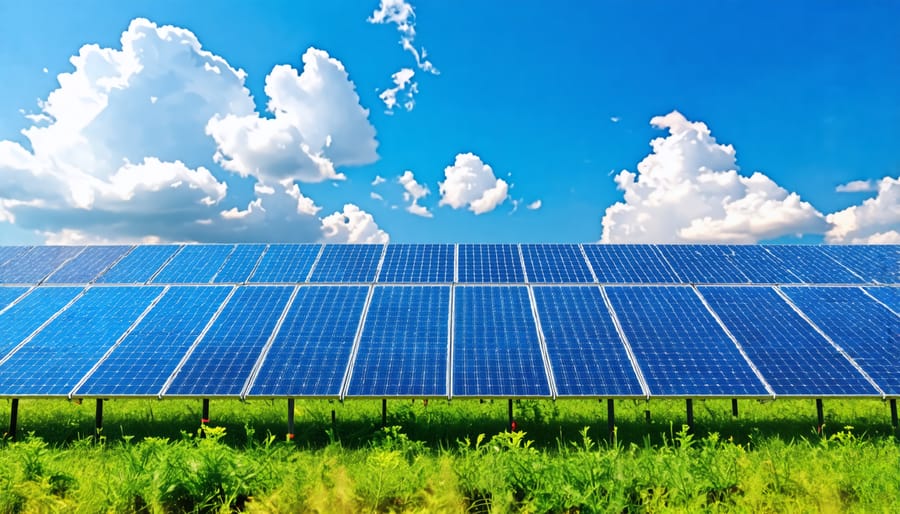
Decreased Carbon Footprint
Solar power plays a significant role in combating climate change by reducing greenhouse gas emissions, particularly carbon dioxide (CO2). Unlike fossil fuels, which release CO2 when burned, solar panels generate electricity without emitting harmful pollutants. By transitioning to solar energy, we can decrease our reliance on coal, oil, and natural gas, thus lowering our carbon footprint. According to the National Renewable Energy Laboratory, the average home solar system offsets the equivalent of burning over 5,000 pounds of coal annually. Furthermore, as solar technology becomes more efficient and widespread, its potential to mitigate climate change increases. Adopting solar power not only benefits the environment but also contributes to a more sustainable future for generations to come. By choosing solar, individuals and communities can actively participate in the global effort to reduce greenhouse gas emissions and slow the pace of climate change.
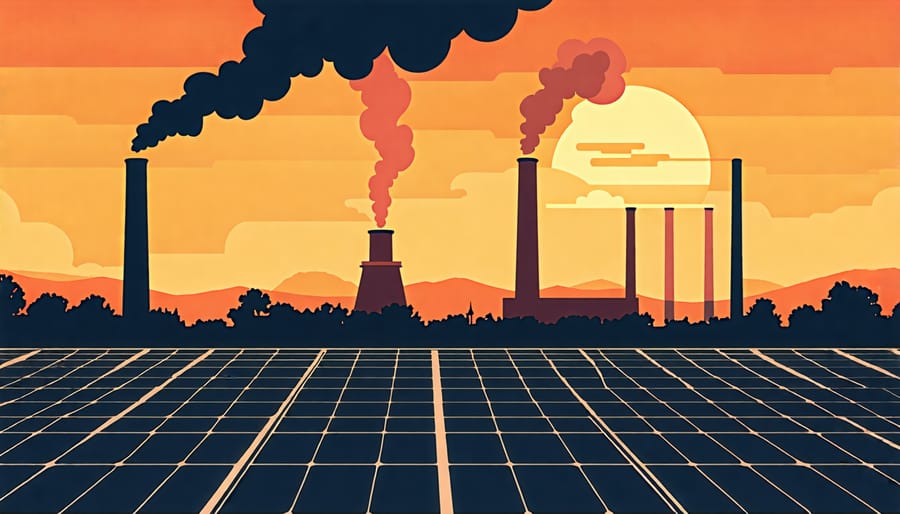
Improved Air Quality
Solar energy significantly reduces harmful emissions from fossil fuel power plants, leading to improved air quality. By harnessing the sun’s power, solar panels generate clean electricity without releasing pollutants like carbon dioxide, sulfur dioxide, and nitrogen oxides into the atmosphere. These pollutants contribute to smog, acid rain, and respiratory issues when released by coal and gas plants. Transitioning to solar power helps combat these negative effects, resulting in cleaner air for communities near power plants and beyond. Additionally, solar energy does not produce particulate matter, which consists of tiny particles that can penetrate deep into the lungs and cause serious health problems. By reducing our reliance on fossil fuels and embracing solar power, we can create a healthier environment with fewer pollutants and cleaner air for all. Making the switch to solar not only benefits the planet but also supports the well-being of individuals and communities by promoting cleaner, more breathable air.
Water Conservation
In contrast to conventional thermal power plants, which often rely on vast amounts of water for cooling, solar photovoltaic (PV) systems require minimal water for operation. By harnessing the sun’s energy directly, solar PV’s minimal water usage helps conserve critical water resources. This is especially important in water-scarce regions, where the adoption of solar power can significantly reduce the strain on local water supplies. As more homes and businesses switch to solar, the cumulative water savings can be substantial, contributing to the overall sustainability of our communities and ecosystems.
Potential Negative Environmental Impacts
Land Use and Habitat Loss
While solar energy offers numerous environmental benefits, the land requirements for large utility-scale solar farms have raised concerns about habitat loss and impacts on wildlife. These sprawling installations can occupy vast tracts of land that might otherwise serve as natural habitats for various species. However, it’s important to note that solar developers and policymakers are increasingly aware of these issues and are working to implement mitigations. For example, some solar projects are being designed to incorporate wildlife corridors, allowing animals to safely pass through the solar arrays. Additionally, developers are prioritizing the use of previously disturbed or low-quality lands, such as former agricultural fields or brownfield sites, to minimize the impact on pristine habitats. Research is also underway to develop more efficient solar technologies that can generate more power from smaller land areas. While the land use implications of solar power deserve consideration, it’s crucial to weigh them against the urgent need to transition away from fossil fuels and combat climate change, which poses an even greater threat to wildlife and ecosystems worldwide.
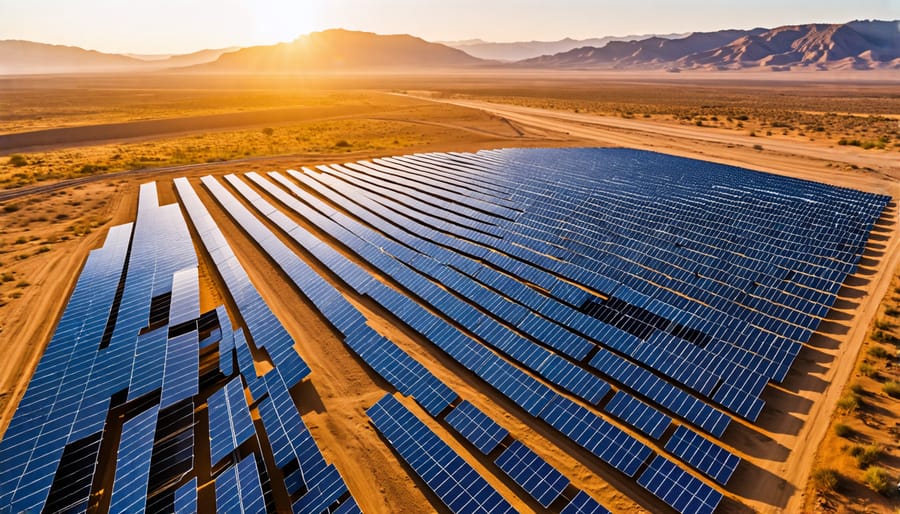
Mining and Material Sourcing
Mining and processing raw materials for solar panel manufacturing can have environmental impacts. The extraction of silicon, copper, and other minerals requires energy and can disturb natural habitats. However, the solar industry is working to minimize these effects by using recycled materials, improving mining practices, and sourcing from responsible suppliers. Innovations in panel design also aim to reduce material usage. While not perfect, the environmental footprint of solar panel production is much smaller than that of fossil fuels when considering the clean energy generated over a panel’s lifetime. As solar technology advances and sustainable practices expand, the balance tips further in favor of solar as an environmentally friendly energy solution. With conscious sourcing and a commitment to progress, the solar industry strives to maximize its positive impact while addressing the challenges of material acquisition.
Disposal and Recycling Challenges
While solar energy is a clean and renewable power source, the disposal and recycling of solar panels at the end of their lifespan poses some challenges. Solar panels contain hazardous materials like lead, cadmium, and other heavy metals that can leach into the environment if not properly handled. As solar adoption grows, so does the volume of solar panel waste, which could reach 78 million metric tons by 2050 according to the International Renewable Energy Agency. Proper recycling is crucial to prevent environmental damage and conserve valuable materials. However, recycling processes for solar panels are still developing, and not all components are easily recyclable. The industry is working on more efficient and cost-effective recycling solutions to minimize waste and ensure solar remains a sustainable energy choice. Governments and organizations are also implementing regulations and programs to encourage responsible solar panel disposal and recycling.
Addressing Solar’s Environmental Challenges
The solar industry, governments, and researchers are actively working to mitigate solar power’s negative environmental impacts and enhance the technology’s sustainability. Manufacturers are developing more efficient solar panels that require fewer raw materials and generate more electricity per panel. They are also exploring ways to recycle solar panels at the end of their lifespan, reducing waste and conserving resources.
Researchers are investigating new materials and designs that could make solar panels even more eco-friendly. For example, some are developing thin-film solar cells that use less energy and materials to produce. Others are working on solar cells made from organic or bio-based materials that are easier to recycle.
Governments and industry organizations are also playing a role in addressing solar’s environmental challenges. Many countries have implemented policies and regulations to encourage responsible solar development, such as requiring environmental impact assessments for large solar projects. Some are also offering incentives for solar panel recycling and investing in research and development to improve solar technology.
As solar continues to grow, the industry is committed to minimizing its environmental footprint and maximizing its benefits. By working together, we can ensure that solar power remains a clean, sustainable, and responsible energy solution for generations to come. With ongoing efforts to improve efficiency, reduce waste, and develop new technologies, the future of solar looks brighter than ever.
Conclusion
In conclusion, while solar power technology is not entirely without environmental impacts, it offers a significant net environmental benefit compared to traditional fossil fuel energy sources. Solar energy substantially reduces greenhouse gas emissions, air pollution, and water usage associated with electricity generation. Although there are concerns about land use and the materials needed to manufacture solar panels, ongoing research and development are working to minimize these issues and improve solar technology’s sustainability.
As solar power continues to advance and become more efficient, its positive environmental impact will only grow. Governments, businesses, and individuals all have a role to play in embracing clean, renewable energy sources like solar power. By investing in solar energy, we can help mitigate climate change, reduce our carbon footprint, and create a more sustainable future for generations to come.
For homeowners and businesses considering solar adoption, it’s important to weigh the environmental benefits alongside the potential financial savings and energy independence that solar power provides. As the costs of solar technology continue to decline and its efficiency improves, the case for going solar becomes increasingly compelling. By making the switch to clean, renewable solar energy, we can all contribute to a healthier planet and a brighter, more sustainable future.




